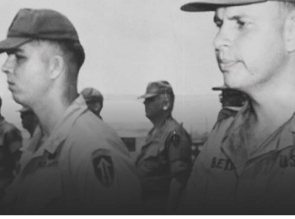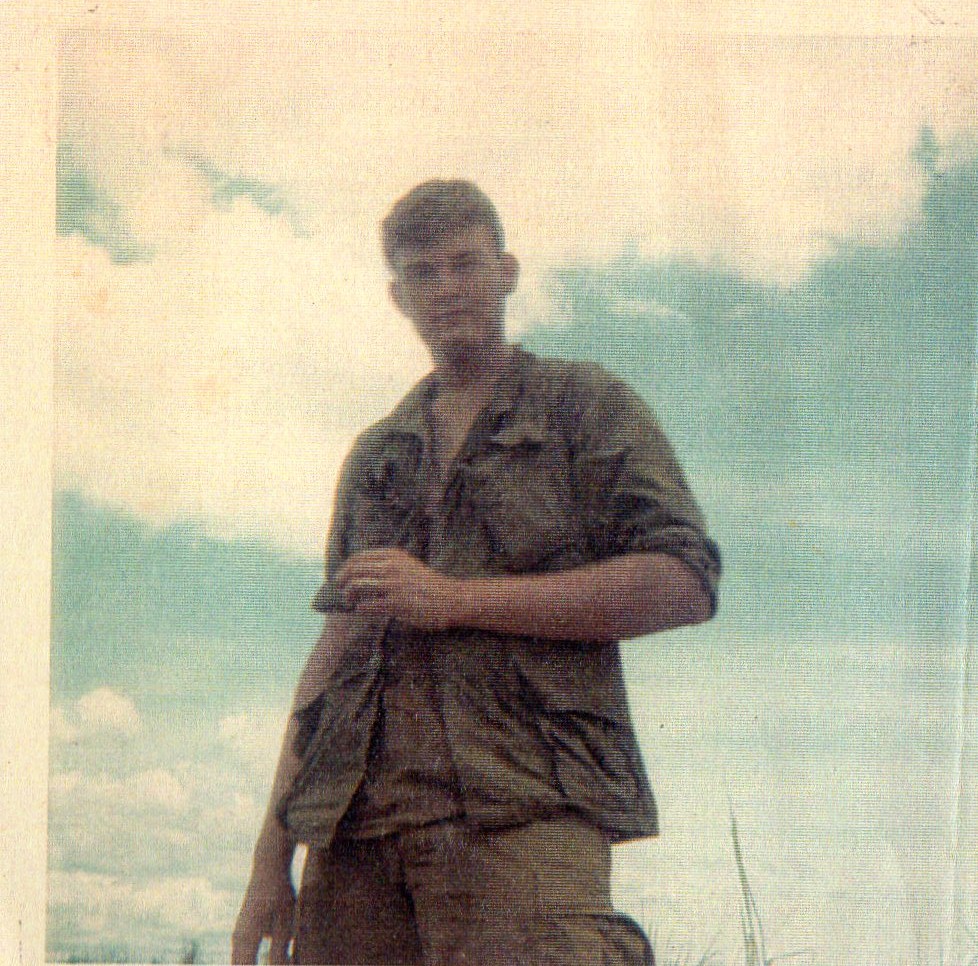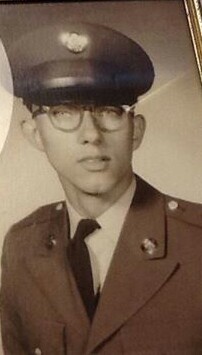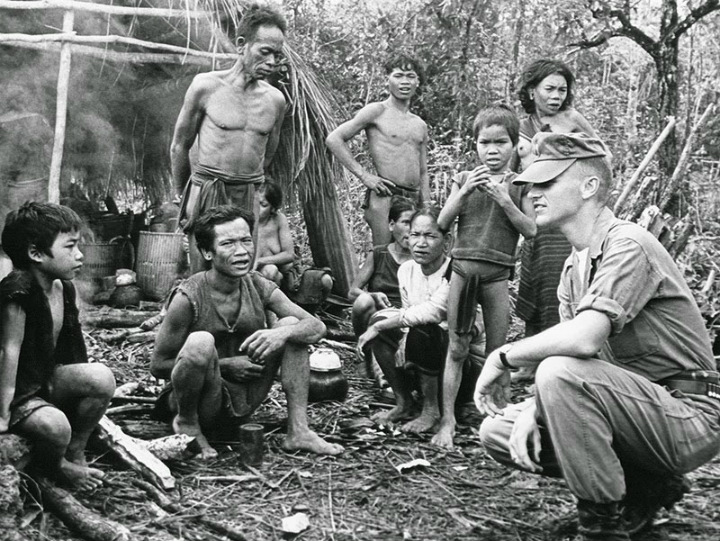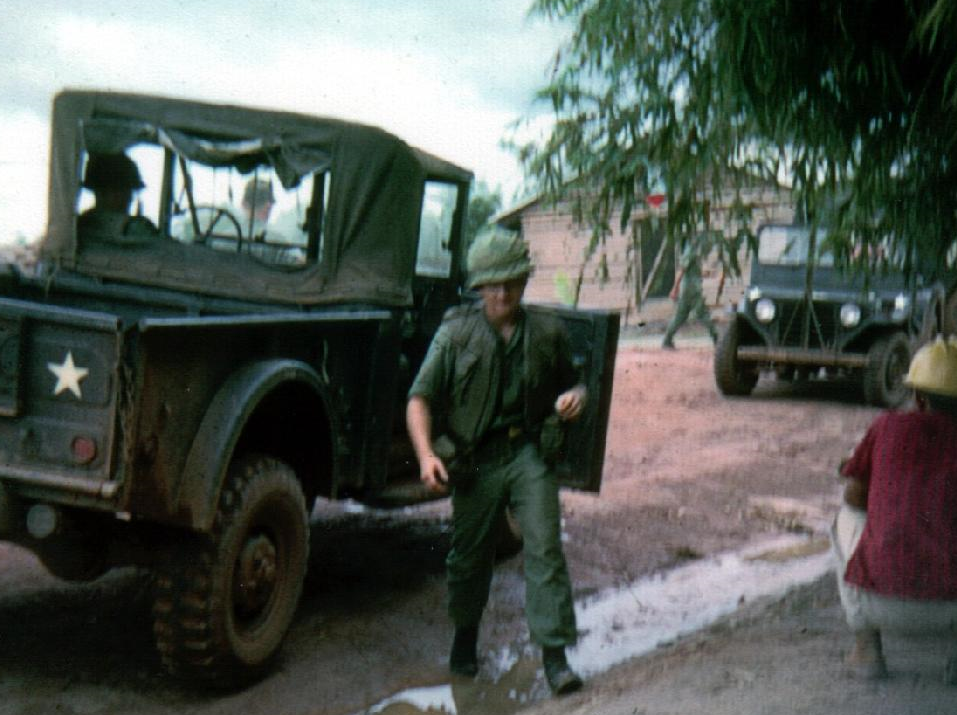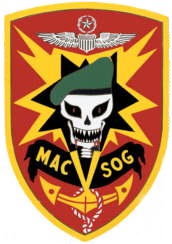My Time as a Navy Corpsman and the Marine Corps
MY TIME AS A NAVY CORPSMAN AND THE MARINE CORPS
On November 11, 1965 my twin brother Ron and I checked into the United States Navy Hospital in Oakland, CA. It was also, known as “Oak Knoll” Navy Hospital. We were E-3 Hospital Corpsmen reporting to our first duty station after a 16 week Hospital Corpsman school at Great Lakes, ILL.
Oak Knoll history goes back to 1942; WW11 was going strong, as we were receiving thousands of wounded soldiers from the Pacific theater. It was also used for the wounded from Korea and Vietnam.
After we checked in with the detailer, Ron was assigned as the head corpsman for Fleet Admiral Chester W. Nimitz. The Admiral was the Commander-in-Chief of the U.S. Pacific Fleet during WW2. Admiral Nimitz also checked into the hospital earlier that same day. I find it interesting that many of the sailors and marines were sent here to this same hospital during WW11. It was his beginning and end.
I was assigned to report to the Burn Ward; the head corpsman of the burn ward came down to escort me to the ward I was going to be working in. There were two burn wards; one was the non-sterile and the other was the critical burn ward, where I was assigned. We were required to wear mask, gown and gloves all the time around the patients. I think there were approximately 12 beds on each side of the ward and each bed was petitioned off. All the patients were coming from Vietnam and around 20 years of age. Most of them wounded from Napalm.
I feel that I need to mention a few things about Napalm before I go any further. It is an enormously destructive weapon. It is stored in 165-gallon containers. Many Vietnam veterans died from being exposed to this “firebomb fuel jell mixture” or from asphyxiation. It ignites upon impact into a fire bomb.
Napalm came from flame throwers and bombs from our aircraft. When dropped from the air, one single bomb could cover an area of 2,500 square yards. B-52’s and marine phantom jets dropped over 388,000 tons of napalm bombs over Vietnam; between 1963 -1973. Sometimes from the jets, it hit our own troops. The temperature was over 2,000 degrees Fahrenheit. This reminds me of a literal hell. Just to put this in perspective; Gold melts at 1,948 degrees.
When napalm falls on a person, the jelling agent will stick to their clothing, skin, and hair, causing severe burns. First Aid to a field corpsman is clear the airways- stop the bleeding – treat the problem; in this case phosphorus burns.
When it touches the skin it literally melts off the clothing and the flesh. This will last up to around 10 minutes. All a medic or field Corpsman can do is quickly remove the contaminated clothing from the skin and pour water over the burn area or smother the burn area from the air with a soaked dressing. You cannot wipe it off; it will only spread the damage. If you don’t have water then applies copper sulfate patches. In other burn cases you “Do Not” remove clothing stuck to the skin, nor soak in water. When people get a second degree burn it causes excruciating pain. Third degree burns, do not cause that much pain but will cause severe internal skin problems.
Burns are classified as first- second- third, fourth and fifth degree depending on how deeply and severely they penetrate the skin’s surface. The following is some good information of the classification.
First-degree (superficial) burns. First-degree burns affect only the outer layer of skin, the epidermis. The burn site is red, painful, dry, and with no blisters. Mild sunburn is an example. Long-term tissue damage is rare and often consists of an increase or decrease in the skin color.
Second-degree (partial thickness) burns. Second-degree burns involve the epidermis and part of the lower layer of skin, the dermis. The burn site looks red, blistered, and may be swollen and painful.
Third-degree (full thickness) burns. Third-degree burns destroy the epidermis and dermis. They may go into the innermost layer of skin, the subcutaneous tissue. The burn site may look white or blackened and charred.
Fourth-degree burns. Fourth-degree burns go through both layers of the skin and underlying tissue as well as deeper tissue, possibly involving muscle and bone. There is no feeling in the area since the nerve endings are destroyed.
Fifth–degree burns. Look above at the temperatures of a napalm fire bomb. With a direct hit they can melt gold at 1,945 degrees.
The rule of 9’s is used to determine the seriousness. A burn that exceeds 30 percent of a person’s body can be potentially fatal.
My job on the ward involved many things: log everything that I did from the patients bodily fluid and waste, bathing, temperature, blood pressure, pulse, cleaning wounds and changing dressings, giving medication, monitor IV’s, changing clothes, sheets and pillow covers, peeling off dead skin and applying lubricated (like bacitracin) 2×2 patches over burned areas. I recorded hourly mental and physical symptoms and other concerns. Many of these wounded veterans felt hopeless and many wanted to die. Some needed to be hand fed. Other services we offered were Skin Grafting, Plastic Surgery, Physical Therapy, Occupational Therapy and Mental Health, Psychiatrists and Psychologists and so much more. We felt that our services were very beneficial for their recovery, even though it took time for them to see their progress.
The following week I was assigned 5 patients; one of them was a 20- year- old black person and my heart sank when I first saw him. His face and upper body were hit by napalm fire. His nose, lips, ears, and eyebrows were completely burned off; he was going to have skin grafting over his whole face. His skin looked like white leather. He was in a lot of pain, and they put an IV in both arms; nitro drip and sodium chloride with medications such as antibiotics. He also suffered from a breathing problem. I also had to monitor his oxygen. My eyes were full of tears for his condition and I prayed that God would help me talk and work with him. I introduced myself to him and told him I would be his personal corpsman. He did not want to talk; he just wanted to die. He told me he looked like a freak, and he refused to see anybody.
This case really bothered me. After that first week on the ward, I went down to see the Navy Chaplin, and I told him about my patient and asked him if he knew of other corpsman that would like to meet with me once a week; so, we could pray together for healing of our patients. He asked me to come back the following Wednesday evening at 6:30.
When I arrived, there were four males and one female corpsman that were interested in meeting every week. They were all Born Again Christians. We got along great and we witnessed a lot of healing.
My patient was from New York City. I learned later that he belonged to a gang, and he was one of the many who was given the ultimatum of going to jail or join the Marine Corps. He lost his parents when he was a young boy and ended up living with his aunt that did not pay much attention to him. Every day, I had to peel off his dead skin and then apply medicated, 2×2 gauzes over those places. I then covered up his face with a 2 inch sterile bandage making him look like a mummy with only his eyes and mouth exposed. After a few weeks he asked me if I would write a letter to his girlfriend and tell her that he did not love her anymore and that he did not want to see her again and to move on with her life. He did not want me to mention what had happen to him.
I tried to encourage him by telling him he was a “Vietnam Hero” people will always look up to you for the price you paid for their freedoms. I told him things like; let us do what we can today, and not think about yesterday. We must move forward. Let us take it one day at a time. As a Christian, I asked him if he knew Jesus Christ, and he told me he heard his name all the time from his gang member friends. They were cursing these words. He did not know Him personally. I spent the next three months talking about the Father, Son (Jesus) and the Holy Spirit. I told him stories about what Job went through and his faith and how God restored his body and His blessings. I hope it helped. He was transferred to a hospital closer to home three months later. Sad to say I forgot his name.
I remember in1972 seeing a picture of a naked Vietnamese 9-year-old girl running from a Napalm Fire explosion that hit her village and it literally burned off her clothes and her skin was peeling from her body.
Her mouth was open, and you could see horror in her face. She was running for her life. This was a picture of hell and war. She is known as the “Napalm Girl”. I googled the story and found out that her name was Kim Phuc. She ended up having 17 operations and now lives in Canada.
After my patient/friend was transferred close to his home; I was also transferred to the Orthopedics ward. It was in another building. Here I worked with young men coming from Vietnam that lost an arm or leg or both. This was also a traumatic place to work. I worked in many areas such as working on the healing of the stump, Physical Therapy and Occupational Therapy. I also worked a lot with the prosthetics. Many of these veterans had wheelchairs.
There is a lot I could tell you about what I did on this ward, but I’m just going to tell you one thing that got me into a lot of trouble.
The patients enjoyed going outside in their wheelchairs. There were a lot of covered sidewalks wide enough for two wheelchairs passing each other. There were a lot of hills and curves. One patient in particular asked me if he could go down the hill on his own. I reluctantly allowed him to go for it. He did and he was so happy to do something fun for the first time since being at the hospital. He asked me if he could do it again. I again gave him the go. That evening he told some of his friends and they asked if they could also go down the hill. I took a few of them outside the next day and allowed them to also go down the hill in their wheelchairs. Other patients asked me if they could race someone, and I thought why not. We went out and the two raced against each other and it really got people excited. There were many that also wanted to race down the hill. So, I had them sign up for a race on the following Saturday afternoon. I believe we had 5 or 6 races. I didn’t know this, but they were betting on the winners. I will never forget it. When I went outside with my amputee’s there were people waiting to see the races. They were patients, nurses, corpsman, and doctors. I thought then that I may be getting into big trouble. But now I had gone too far to stop.
I had someone go down to the finish line and write down the winner’s names. When the first race started, the people were all yelling for encouragement of the racers. I noticed that a lot more people coming out to see what was going on. Then the winners went against each other, we did this to the last two winners, then we had a winner. It was a great and fun day for all!
Monday morning after breakfast, I received word that the Command Master Chief of the hospital wanted to see me in his office immediately. I was not sure if he was going to congratulate me on bringing some fun and entertainment to the troops or demote me in rank and give me a bad evaluation. When I showed up at his office, I sensed I was in big trouble. Being a Christian I cannot tell you what he said, but he told me “NEVER” do anything that stupid again in his navy. He stated that I was confined to stay on base for two weeks with no liberty and to report to the cafeteria after work for KP duty. When I reported back to work; I was welcomed as some kind of a hero. I was happy that I was able to bring some joy to our wounded veterans. As a kid in Joplin, Missouri I spent a lot of time at the YMCA and witnessed 2 young men in wheelchairs playing basketball, they were really enjoying themselves. I thought about this, but after being chewed out by the Master Chief; I decided against it. I am really not a troublemaker; I just wanted them to fulfill their potential physical life; and live their dream.
On 5 October 1966 I was sent to a six week Fleet Marine Forces training at Camp Pendleton, California. After graduation around 100 of us corpsman boarded buses and were transported to LAX and I remember the busses pulled up to a 747 Pan Am, and we boarded the plane. We were off to Vietnam. We stopped in Okinawa for a couple of days to receive some of our equipment and orders for Vietnam. As we were preparing to board the C130, my name was summoned by the loud-speaker to meet a corporal on the tarmac. He asked me if I had a brother in Vietnam, and I told him I did. He then said my orders will be changed and I would be staying in Okinawa. I already knew about the Sullivan Act, but I did not say anything because I wanted to go to Vietnam so that Ron could be transferred out of Vietnam.
I checked in at Camp Hanson; they transferred me to be a corpsman and instructor at the Counter Guerilla Warfare School at Northern Training area. This was on the jungle side of the Island. There I helped set up a Vietnam village and it resembled what the marines would see in Vietnam. The Seabees built a large patio with a concrete floor and a thatched roof of bamboo, straw and palm branches. It was here I taught my classes of around 250 marines per class twice a day. They were headed to Vietnam after one week of classes. I taught the following subjects: 1.) Survival in Vietnam; dealing with such things as snakes, leaches, spiders, and centipedes. 2.) Field sanitation; water, sewage, garbage disposal. 3.) Information on Agent Orange. 4.) Combat First Aid. 5.) Personal Hygiene: and try to keep your body and clothing clean as possible, feet dry and exposed to open air and sunshine, watch for blisters, and try to prevent immersion foot. This was a very serious condition in Vietnam due to the fact that you are in and out of the rice paddy water which eventually breaks down the tissue and creates small breaks in the skin and they infect and cellulitis occurs. 6.) Chemical and Biological warfare defense. There were thousands of marines that went through my classes. It was also enjoyable to talk to other corpsman.
On 16 August, 1967, I completed my tour and was rotated back to the states for separation. The first thing I did was reenlisted back into the Naval Reserves program and continue my reserve time.
My brother Ron and I served as Command Master Chief at the same Navy Reserve Center we joined; Ron served for one week end and I served another weekend each month. We were the only twin Master Chief Corpsman in the United States Navy.
Ron and I retired from the same Navy Reserve Center we joined 31 years before and obtained the rank of E-9 Command Master Chief.
We were both happy to serve our country.
Don Mosbaugh HMCM, Retired July 15, 2021






